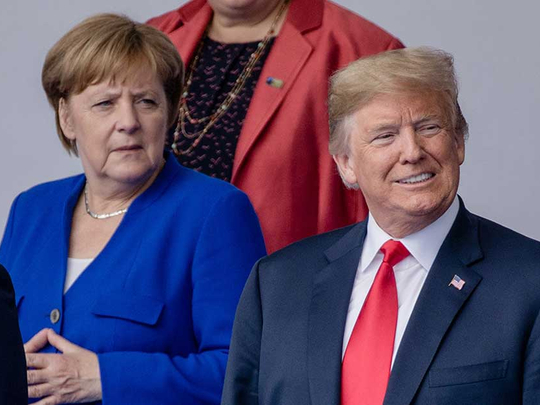
A pipeline to deliver gas from Russia to Western Europe is at the heart of a controversy between the US and some European countries, especially Germany. US President Donald Trump criticised Germany for its pursuit of the Nord Stream II pipeline, stating that “Germany, as far as I’m concerned, is captive to Russia because it’s getting so much of its energy from Russia.”
And “We have to talk about the billions and billions of dollars that’s being paid to the country we’re supposed to be protecting you against.”
Let me remind the readers about Nord Stream I, which is the direct connection between Russia’s gas reserves and Western Europe. It has been operational since November 2011, bringing Russian gas to the European pipeline network at a capacity of 55 billion cubic metres (bcm) a year.
The system has a 917-kilometre, 56-inch diameter onshore pipeline between Russian fields and the port of Vyborg on Finland Bay and also serves Russian territory and Finland. Then there are two parallel lines of 1,222 kilometres with a 48-inch diameter pipe along the bottom of the Baltic Sea from Vyborg to the German port of Greifswald. Another two lines totalling 850 kilometres connect the sea lines to the south and west of Germany and the European gas grid to Denmark, Holland and the UK.
Nord Stream II is an improved duplicate or an expansion of it. In 2011, Nord Stream AG, a Gazprom subsidiary, started evaluation of this expansion, which would include two additional lines to increase capacity to 110 bcm. Onshore Russian pipelines would be equally expanded to feed Nord Stream II.
In June 2015, an agreement to build the project was signed between Gazprom, and western energy companies Shell, E.ON, OMV, and Engie and in April 2017, Uniper, Wintershall, Engie, OMV and Shell signed a financing agreement with Nord Stream AG.
The project was supposed to be completed by the end of 2019 but, due to delays in obtaining approvals of countries where the lines will transit their territorial waters or their exclusive economic zones, completion is now delayed by a year or so. Approvals are now in place from Finland, Sweden and Germany and only Denmark is still in opposition, possibly due to US pressure.
However, Gazprom has a plan to reroute the pipeline north of the Danish island Bornholm to run in international waters if the Danish authorities continue with their current position. Opposition from Poland and Ukraine is understandable because if Russian gas is diverted from pipelines crossing the two countries, they would lose transit fees in addition to seeing increased Russian influence in Europe.
In the case of Ukraine, Russia is said to seek cutting its current 90-bcm a year of gas transit via Ukraine, though the Russians and Germans deny that. Fearing the loss of about $3 billion in transit fees, the Ukrainian President, Petro Poroshenko, recently said “This is not a commercial project — it is not economical or profitable — it is absolutely a political project.”
Germany believes that the project is economical with no political consequence and analysts believe that it is essential to get Germany out of nuclear energy by 2022. There is no doubt that the project is a major energy security provider to the EU and all of Europe, where gas production is declining and consumption is rising at the rate of more than 5 per cent.
Ten years ago, the prospect for gas in Europe was much higher than what it is now. The advent of renewable energy has eaten up some of the prospects for gas. Yet, European gas demand in 2040, according to IEA’s “New Policies Scenario”, is forecast at 631 bcm, of which the EU’s is at 454 bcm. Production is expected to decline to 236 bcm, of which the EU’s is a meagre 76 bcm. Therefore, European imports of about 395 bcm will be required, which is 30 per cent above the current level.
The increased dependence on Russian gas continues to be a major point raised by critics. But due to the developments on the demand side, dependence on Russia may be at the same level as it is now, given the increase of imports from other sources, especially as LNG from the US.
The Russian supplies to Europe — currently about 200 bcm a year — will be the most abundant and cheapest.
US pressure or not, the project is expected to go ahead as it involves all the major European gas and oil companies. It remains to be seen whether the US Congress’ threat to sanction European companies involved in the pipeline may materialise against the US allies and partners.












